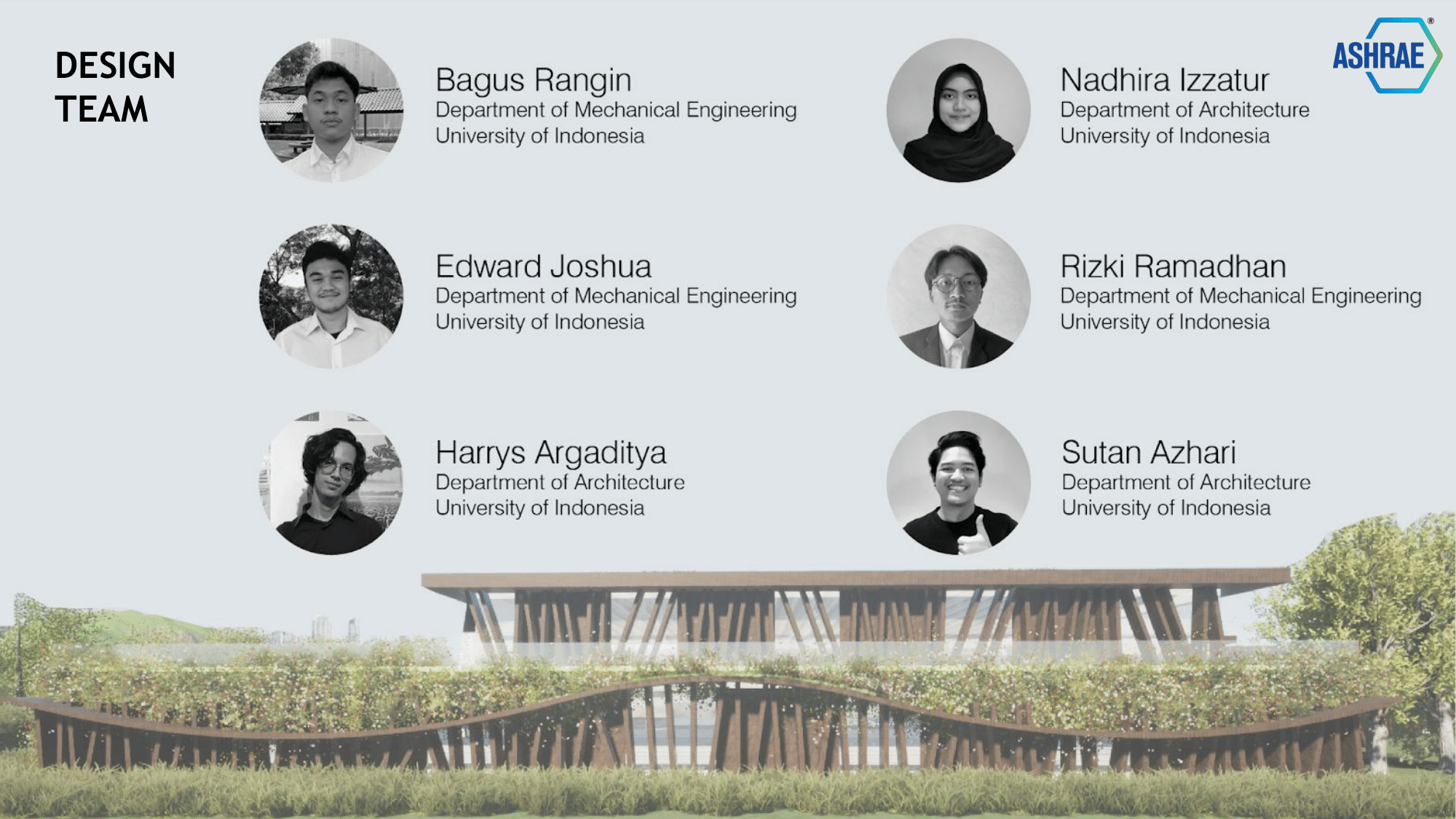The American Society of Heating, Refrigerating and Air-Conditioning Engineers (ASHRAE) 2022, awarded Nadhira Izzatur (Architecture 2018), Sutan Azhari (Architecture 2018), Harrys Argaditya (Architecture 2019), Bagus Rangin (Mechanical Engineering 2018), Edward Joshua (Mechanical Engineering 2018), and Rizki Ramadhan (Mechanical Engineering 2018) who represented Indonesia at the ASHRAE 2022 competition. The team from the University of Indonesia (UI) was under the guidance of Ardiyansyah Yatim ST, M.Eng., Ph.D., a lecturer in the Engineering Department Machines, and Dr.-Ing. Ova Candra Dewi, S.T., M.Sc., a lecturer at the Department of Architecture, FTUI, won 1st place in the ISBD ASHRAE 2022 category, beating thirteen other teams.
The UI team participated in the Integrated Sustainable Building Design (ISBD) branch which covered the fields of architecture, mechanical engineering, and electrical engineering. Competitors are asked to design a building located in Sydney, New South Wales, Australia, that meets ASHRAE standards. In addition, the design of the building must also be able to significantly reduce carbon dioxide emissions to realize an environmentally friendly building or Zero Net Energy Building (ZEB).
“Zero Net Energy Building if interpreted is a No Energy building. In this case, buildings can reduce energy requirements efficiently and balance the resources used with the resources produced through renewable energy sources. Buildings with the ZEB concept will generate their operational energy needs from renewable energy sources, such as wind, water, solar, and others,” said Dr. Ova Chandra who is also the Head of the Multidisciplinary Urban Planning Masters Program FTUI.
To answer this challenge, the UI team submitted a project design for the UTS Art Center, the University of Technology Sydney art building. The team designed a two-story building for the 23,000-square-meter arts center by harnessing energy from the sun and wind. The UI team initiated five energy-saving strategies: bicycle parking, performative building facades, placement of solar panels, making roof gardens, and placing vertical greens on building facades.
“To add aesthetics to the building, the team adopted the round roof of an Australian Aboriginal house to beautify the building on the curved facade. In addition, we also take advantage of native Australian grass in the roof garden. With a green roof area of 7400 m2, this building has the potential to absorb 13.8 tons of CO2 per year and release up to 10.6 tons of O2 per year. Especially for the green roof, we use native Australian grass plants,” said Nadhira.
“Team members from Mechanical Engineering FTUI contributed ideas in the form of calculating the energy needed to cool the building in summer and the energy needed to heat the building in cold weather. Calculations are also carried out on design elements
used and its impact on the energy efficiency of the building. The goal is that the air and hot light from outside are minimal so that the temperature inside the building is maintained. This strategy has been proven to reduce the cost of using air conditioning machines and fans, which amount to 64 percent of the building’s total energy needs,” said Dr. Ardiyansyah.
“With the different scientific backgrounds of students, architecture and mechanical engineering, the important value that was grown so that they succeeded in winning this competition, namely the value of collaboration. How can each other implement each other’s ideas and ideas. FTUI fosters and encourages the spirit of cooperation and collaboration between students, both in research activities and competitions to produce superior innovations and has an impact on society,” said the Dean of FTUI, Prof. Dr. Heri Hermansyah, ST., M.Eng., IPU.
After winning this competition, the UI team will participate in the ASHRAE 2023 winter meeting which is planned to be held in February 2023 in Atlanta, Georgia, United States. ASHRAE International is a global professional society association committed to serving society by advancing the art and science of ventilation, heating, air conditioning, refrigeration, and related fields. The Society was founded in 1894 and is headquartered in Atlanta, Georgia, USA.
***
Public Communication Bureau
Faculty of Engineering, Universitas Indonesia

